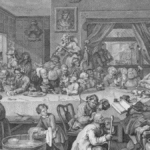The term Tamil Thalavaivas has grown far beyond its linguistic roots to symbolize leadership, pride, and identity among Tamil-speaking communities. It represents not only the political and cultural leaders of Tamil Nadu but also the intellectual and creative visionaries who embody the collective spirit of Tamil society. In today’s fast-evolving India, Tamil Thalavaivas serve as a bridge between ancient cultural values and modern aspirations. They are the storytellers, politicians, filmmakers, and reformers redefining what it means to be a leader in a globalized Tamil world. This article explores how Tamil Thalavaivas evolved from traditional chieftains and reformers into influential icons who inspire millions both within and outside India.
The Historical Roots of Tamil Thalavaivas
The concept of “Thalavaivas,” derived from “Thalaivar,” meaning leader or chief, has ancient roots in Tamil civilization. From the Sangam age to modern politics, Tamil culture has always valued leadership grounded in justice, intellect, and courage. Early Thalavaivas were community protectors, philosophers, and warriors. Kings like Karikala Chola and Rajaraja Chola were not merely rulers; they were visionaries who saw leadership as a divine duty.
In ancient Tamil society, the role of a Thalavaiva went beyond political command. It involved upholding Aram (righteousness), fostering education, and protecting cultural values. Tamil Sangam literature often portrayed leaders as custodians of the land, poets, and warriors who led with compassion and wisdom. These leaders were symbols of pride, responsible for the welfare of their people rather than personal power.
Quote: “A true Thalavaiva is not one who rules over people, but one who rules over hearts.”
The Political Evolution: From Kings to People’s Leaders
The transition from monarchy to democracy in Tamil Nadu was a defining moment in the identity of Tamil Thalavaivas. The 20th century saw the rise of Dravidian politics, a movement that redefined leadership in Tamil society. Leaders like Periyar E. V. Ramasamy, C. N. Annadurai, and M. Karunanidhi became the torchbearers of Tamil pride. They challenged social hierarchies, emphasized self-respect, and prioritized the Tamil language and culture.
Periyar’s rationalist movement shifted the focus of leadership from hereditary rule to ideological awakening. Annadurai’s oratory connected politics with poetry, and Karunanidhi’s pen became mightier than any sword. The emergence of cinema as a cultural vehicle further elevated leaders into icons—turning “Thalavaivas” into larger-than-life figures who could both entertain and enlighten.
Table 1: Evolution of Tamil Thalavaivas through Eras
| Era | Dominant Type of Leadership | Key Figures | Core Values Promoted |
|---|---|---|---|
| Sangam Period | Warrior-Philosopher Kings | Karikala Chola, Cheran Senguttuvan | Courage, Justice, Art |
| Colonial Era | Reformist Thinkers | Subramania Bharathi, Periyar | Freedom, Equality, Rationalism |
| Post-Independence | Political and Cultural Leaders | Annadurai, Karunanidhi, MGR | Tamil Identity, Social Welfare |
| Global Era | Intellectuals and Artists | Kamal Haasan, Rajinikanth, Contemporary Activists | Modernization, Global Tamil Unity |
Each stage of evolution brought a new dimension to the idea of leadership. Tamil Thalavaivas, across history, have represented the perfect fusion of emotion and intellect.
Tamil Thalavaivas in Cinema and Popular Culture
In Tamil cinema, the idea of a Thalavaiva reached mythic proportions. The silver screen became a platform for expressing leadership, rebellion, and justice. When actors like M. G. Ramachandran (MGR) and Rajinikanth portrayed righteous heroes fighting for the common man, they weren’t just characters—they were reflections of the collective Tamil psyche yearning for fairness and strength.
The merging of cinema and politics in Tamil Nadu created an unparalleled model of cultural leadership. Cinema became a tool for social transformation, where dialogues carried political undertones and songs became revolutionary anthems.
Quote: “In Tamil Nadu, a leader’s popularity is not written in speeches—it is sung through cinema.”
Modern Thalavaivas like Kamal Haasan and Rajinikanth extend this tradition. They are not only actors but also social commentators who voice the aspirations of a changing generation. Their journey from screen heroes to political visionaries demonstrates how deeply intertwined leadership and art remain in Tamil society.
The Cultural Backbone of Tamil Leadership
Tamil Thalavaivas derive their moral authority from culture. The Tamil identity is inseparable from its literature, temples, traditions, and language. The Tamil script, one of the oldest living scripts in the world, serves as the backbone of cultural continuity. Leadership in Tamil Nadu often intertwines with linguistic pride—whether it’s protecting the Tamil language from external dominance or promoting it across global platforms.
Tamil Thalavaivas often embody three core traits:
- Empathy: A deep understanding of people’s struggles and emotions.
- Cultural Awareness: Respect for Tamil art, heritage, and linguistic beauty.
- Visionary Thinking: A forward-looking approach to education, equality, and global relevance.
These values have ensured that leadership remains rooted in ethical conviction, not mere populism.
Table 2: Traits Defining a Modern Tamil Thalavaiva
| Trait | Description | Example in Practice |
|---|---|---|
| Empathy | Understanding people’s pain and aspirations | Welfare schemes, public interactions |
| Integrity | Transparency in public life | Honest governance, ethical reforms |
| Cultural Advocacy | Promoting Tamil arts and education | Support for local artists, Tamil conferences |
| Innovation | Balancing tradition with progress | Modern policies inspired by ancient ethics |
| Global Outlook | Connecting Tamil diaspora worldwide | Cultural festivals, cross-border collaborations |
Modern Tamil Thalavaivas: Beyond Borders
In the 21st century, Tamil leadership has transcended state boundaries. The Tamil diaspora—spread across Singapore, Malaysia, Sri Lanka, the Middle East, and the West—has nurtured a global Tamil consciousness. New Thalavaivas have emerged in education, technology, and entrepreneurship, redefining influence in the digital era.
Figures like Sundar Pichai, the CEO of Google, though not political leaders, embody the Tamil Thalavaiva spirit of intellectual brilliance and humility. The global success of Tamil cinema, music, and literature continues to elevate the community’s image worldwide.
Leadership among Tamils abroad now includes cultural preservation initiatives, Tamil schools, and festivals that reconnect younger generations with their roots. This expansion of the Thalavaiva concept highlights its adaptability to modern challenges.
Quote: “Every Tamil who carries forward the pride of their language and culture is a Thalavaiva in spirit.”
Social Reform and Equality: The Ethical Core
One of the defining pillars of Tamil Thalavaivas is their unwavering commitment to social justice. The Dravidian movement redefined equality as a birthright rather than a privilege. It inspired leaders to challenge caste discrimination, gender bias, and economic disparity.
Today’s Tamil Thalavaivas continue this legacy through grassroots activism, digital awareness campaigns, and educational reforms. They are not confined to political power but extend leadership to community service, women empowerment, and youth engagement.
These reformers recognize that leadership without compassion becomes tyranny. Hence, their focus lies on elevating the marginalized while promoting inclusivity.
The Role of Women in Tamil Thalavaivas
Though historically dominated by men, Tamil leadership has increasingly welcomed powerful female voices. From poets like Avvaiyar in ancient times to political figures like Jayalalithaa in modern India, women have been instrumental in shaping Tamil identity.
Jayalalithaa’s legacy, for instance, reflects both strength and resilience. She redefined the image of a woman leader—commanding, compassionate, and fearless. Women Thalavaivas today are active in politics, literature, cinema, and entrepreneurship, demonstrating how leadership in Tamil society is evolving toward balance and inclusivity.
Education and Technology: A New Arena of Leadership
Tamil Nadu has become one of India’s educational hubs, producing scientists, engineers, and thinkers who carry the Thalavaiva spirit worldwide. The rise of technology-based leadership reflects how Tamil Thalavaivas are adapting to global realities.
Educational reforms, digital literacy campaigns, and youth skill programs have become the new battlegrounds for leadership. Modern Thalavaivas now include educators, innovators, and activists who lead not from podiums but through data, creativity, and mentorship.
Quote: “The modern Tamil leader is one who empowers others to lead.”
Challenges Facing Tamil Thalavaivas Today
Despite progress, Tamil leadership faces significant challenges. Political fragmentation, media polarization, and generational divides have complicated the concept of unity. As younger generations embrace global lifestyles, maintaining cultural roots becomes more complex.
Moreover, environmental degradation, urban inequality, and language erosion threaten the moral essence of Tamil leadership. A new generation of Thalavaivas must address these crises through education, sustainability, and cultural diplomacy.
The Global Future of Tamil Thalavaivas
As Tamil Nadu moves toward becoming a knowledge economy, the role of leadership is being redefined. Tomorrow’s Tamil Thalavaivas will likely emerge from diverse fields—entrepreneurship, academia, art, and technology. They will represent a blend of global intellect and local pride.
The Tamil identity, carried across centuries, will continue to thrive as long as leadership remains ethical, empathetic, and visionary. The digital era, with its limitless communication, has given Tamil Thalavaivas a new platform to inspire, connect, and evolve.
The Philosophical Legacy of Thalavaivas
Tamil philosophy, deeply rooted in Sangam literature, teaches that leadership must harmonize intellect with compassion. The ethical teachings of Thirukkural guide leaders even today. Verses like “The world endures because of good leadership” remind us that Tamil culture always valued virtue above authority.
Tamil Thalavaivas, therefore, are not simply individuals—they are embodiments of collective consciousness. Their strength lies in unity, intellect, and cultural pride.
The Continuing Legacy
Tamil Thalavaivas continue to shape India’s cultural and political landscape. Their influence stretches across cinema, politics, literature, and technology, reflecting a unique fusion of art and intellect. Whether through speeches, screenplays, or social reforms, they carry forward the moral compass of Tamil civilization.
The Tamil language remains at the core of this identity—a living, breathing force that connects leaders with people. The future of Tamil Thalavaivas depends on how the next generation upholds these values in a changing world.
Key Takeaways
- Tamil Thalavaivas symbolize leadership grounded in justice, intellect, and compassion.
- From ancient kings to modern tech leaders, the spirit of Tamil leadership has evolved but never faded.
- Cinema and politics have intertwined to create unique cultural leaders.
- Modern Thalavaivas extend leadership to global arenas—education, technology, and culture.
- The essence of Tamil leadership lies in empathy, equality, and ethical governance.
Frequently Asked Questions (FAQs)
1. What does the term Tamil Thalavaivas mean?
Tamil Thalavaivas refers to Tamil leaders or influential figures who embody the values of justice, intellect, and cultural pride. It symbolizes not only political leaders but also thinkers, artists, and reformers who shape Tamil identity.
2. How did Tamil Thalavaivas evolve over time?
They evolved from ancient chieftains and philosophers to modern reformers and global icons. The Dravidian movement and Tamil cinema played key roles in redefining leadership for the modern era.
3. Who are some of the most influential Tamil Thalavaivas?
Historically, leaders like Karikala Chola, Periyar, Annadurai, and Karunanidhi stand out. In the cultural realm, figures like Rajinikanth, Kamal Haasan, and Jayalalithaa continue the legacy.
4. What values define a Tamil Thalavaiva?
Integrity, empathy, cultural pride, and visionary thinking. A true Thalavaiva leads through compassion and ethical action, not authority alone.
5. What is the future of Tamil Thalavaivas in a globalized world?
The future lies in balancing cultural heritage with innovation. Global Tamil leaders in technology, education, and art will carry forward this evolving identity, ensuring Tamil leadership continues to inspire beyond borders.







